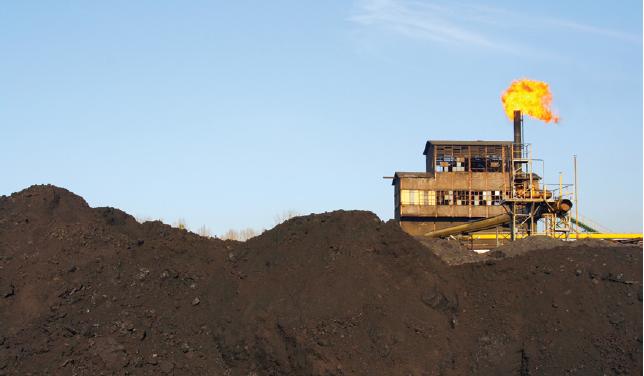Coal seam gas is a volatile and divisive fuel, dubbed by the industry as a greenhouse hero,
Question:
‘Coal seam gas is a volatile and divisive fuel, dubbed by the industry as a greenhouse hero, but perceived by environmentalists as a water villain.’ In Australia, the rapid expansion of coal seam gas (CSG) mining may risk other important natural resources. The resources at risk include clean, fertile agricultural land; safe, long-term water supplies; and a safe and pleasant countryside. Other risks include uncertain environmental damage, growing social disharmony and a break-down in corporate management regulators and systems that are struggling to keep pace with the development of CSG.
The CSG industry is, at present, thriving across the globe, and with less greenhouse gas emissions and risk of climate change CSG has been widely promoted as a ‘cleaner’ alternative to coal. Yet, recent research has cast doubt on this, stating that gas may be an obstacle rather than a bridge to a cleaner energy future. This doubt therefore places many ethical and social responsibilities on CSG mining organisations. Queensland specifically represents one of the largest economic havens for this profitable resource, and many multinational corporations come from all over the world in order to drill within the Surat and Bowen Basins. These small pockets of energy-rich gas, found within coal seam fracture lines hundreds of metres under the earth, come at an enormous expense to the mining companies that harvest them. In addition, the expense also appears to include the environments that accommodate the gas deposits. At present, these mining magnates in pursuit of CSG are facing many environmental issues. Governments such as the Queensland state government heavily regulate mining operations in order to enforce a strict set of standards that protect both heritage and environmental sustainability. However, with some organisations, the motivation for these ethical responsibilities lies within the continuation of profitable operations and evasion of legislative enforcements. Governments clearly have a responsibility to ensure that these projects do deliver real benefits to local regions and beyond, while minimising harm to the regions via social and environmental damage. Achieving this balance is vital in ensuring the long-term success of a CSG project by organisations.
CSG operations currently involve wells dug hundreds of metres into the earth’s surface to reach pockets of gas. In order to achieve this, large drills are used to bore into the earth’s surface and, in order to keep these drills lubricated and cool, large deposits of toxic water are pumped into drilled wells. At present, this toxic water is then mixed with cuttings of the coal seams and pumped to the surface as a contaminated mud waste. This waste product is then removed and pumped into large sump pits, which are then buried under the earth’s surface at a cost paid to the government.
Environmental concerns raised about CSG include the disposal of toxic waste in water, soil and air; as well as the excessive use of water required in the production of CSG. The disposal of toxic waste is a vast issue by itself, impacting on environmental ecosystems and causing groundwater contamination. Other issues include the drawbacks of produced water treatment and the level of salt in the water found in coal seams that comes to the surface. Another important issue is the process of fracking. Fracking occurs when CSG is released with the use of high pressure pumps, sand, water and chemicals. These are injected into bore wells to fracture rocks and open cracks (cleats) to release natural gas. This process uses significant quantities of water, as extracting CSG relies heavily on reducing groundwater pressure that is absorbed between layers of rock. Due to decreasing levels of water, the salt that was present in the water increases.8 This is concerning, as the increased levels of salt can flow and resurface into groundwater that will, in turn, affect the drinking water, agriculture and wildlife. This can also impact on stakeholders such as communities, farmers and users of this water.
Contamination of water is a major concern for productive farmlands and communities as they bear the risk of health hazards. Farmlands, in relation to vegetation, livestock and agricultural crops, are also being affected through the contamination of water and soil. In addition to these water management risks, ‘CSG development could also cause significant social impacts by disrupting current land-use practices and the local environment through infrastructure construction and access’.
Communities have therefore raised concerns that many of these projects will have major environmental and social impacts, as large CSG development poses poorly assessed, yet potentially serious, health risks to the community. Consequently, there is the potential for long-term impacts on rural communities and for public health to be affected indirectly or directly through contamination of soil, air or water. Current monitoring, regulation and assessment of CSG impacts on public health, the environment and vulnerable communities may be insufficient in providing confidence of adequate safeguards.
During these uncertain times, the allocation of management teams and expertise will call for the involvement of diverse professions in order to cover a range of responsibilities that are needed to be applied if sustainable decisions are to be made. To Australia, the CSG industry presents important economic benefits. However, at the same time, it risks having long-term, significant impacts on adjacent surface and groundwater systems if not effectively regulated or managed.
QUESTIONS
1. Based on this example, how can mining companies respond to the seemingly conflicting needs of exploiting natural resources that are helpful in reducing greenhouse gas emissions while minimising environmental impact?
2. Suggest how a shared value approach to this dilemma may assist companies to produce a win–win solution.
3. How might a quadruple bottom line assessment of performance by mining companies change the approach to CSG extraction?
Step by Step Answer:

Management
ISBN: 9780730329534
6th Asia Pacific Edition
Authors: Schermerhorn, John, Davidson, Paul, Factor, Aharon, Woods, Peter, Simon, Alan, McBarron, Ellen





